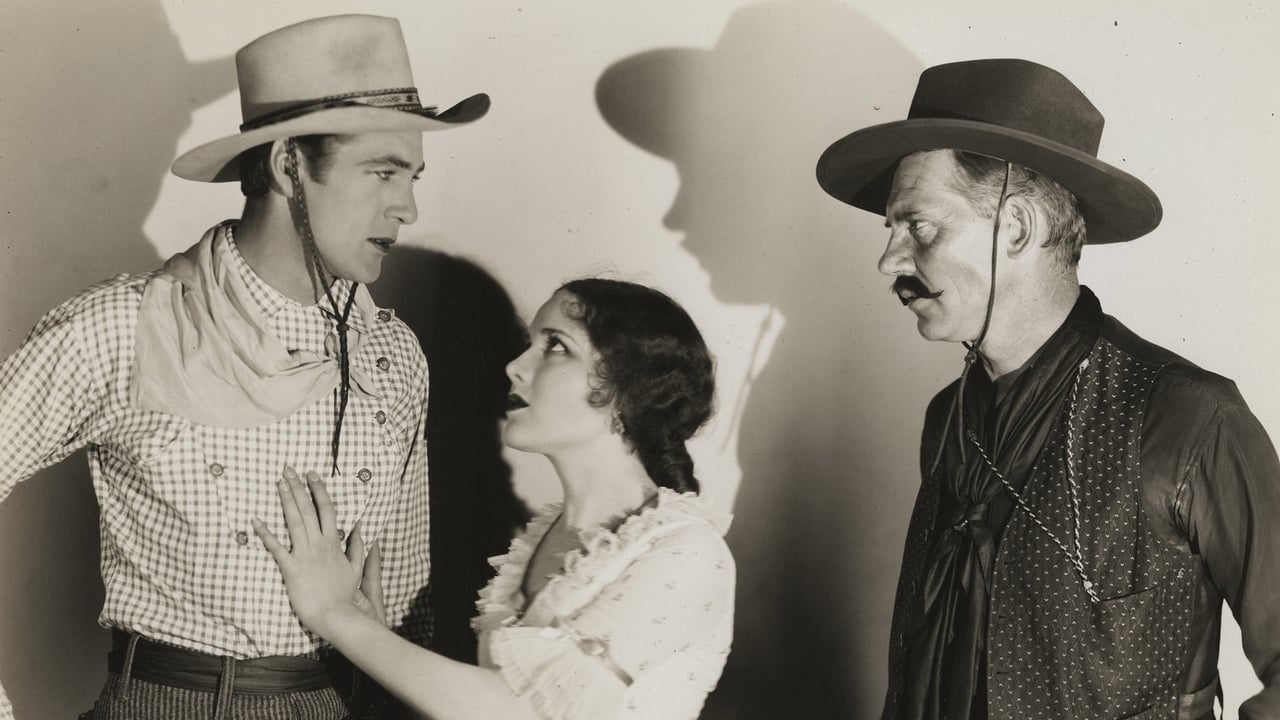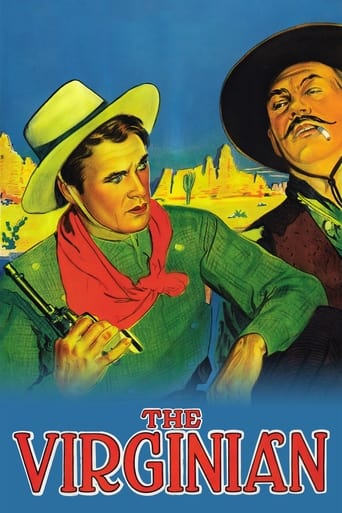

SERIOUSLY. This is what the crap Hollywood still puts out?
... View MoreA movie that not only functions as a solid scarefest but a razor-sharp satire.
... View MoreOne of the best movies of the year! Incredible from the beginning to the end.
... View MoreClose shines in drama with strong language, adult themes.
... View MoreFor his initial all-talking movie, Victor Fleming directed Gary Cooper in a rousing version of The Virginian (1928). Although Cooper's account of the title role was both charismatic and convincing, acting honors were stolen by Richard Arlen, of all people, as the hapless Steve. Walter Huston as the evil Trampas also overshadowed Cooper. Mary Brian's somewhat colorless heroine proved no match for the male trio, although she did come into her own at the climax. Eugene Pallette and Chester Conklin were on hand for comedy relief, but fortunately this angle was not overplayed. Fleming not only kept the comedy under control, but accentuated the drama by adopting a remarkably free-wheeling style. In fact, Fleming emerges as one of the few major directors who was not frightened by sound, but continued to handle the script in a thoroughly filmic - rather than a stagy - fashion. (Formerly available on a 9/10 VintageFimBuff DVD).
... View MoreWhile "The Virginian" is a bit less enjoyable due to it being a very early and old fashioned film, it is worth seeing and helped to make Gary Cooper a star. When I say it's old fashioned, it's because early sound pictures tended to have little incidental music and the films aren't as polished as films made by Hollywood just a couple years later. This is definitely the case with this film...plus like so many later westerns, much of the story creates a mythic version of the West that never actually existed.Soon after the film begins, the new school teacher, Molly, arrives from back East. The Virginian (Cooper) is smitten with her but she is a bit difficult to get to know due to her eastern ways. Eventually, however, they start to like each other...and this is damaged by the Virginian going off on a posse to catch cattle rustlers. This is because one of the rustlers turns out to be his friend, Steve (Richard Arlen)...and Molly blames the Virginian for the posse hanging Steve. However, they soon patch things up and are on the way to a happy marriage...when the leader of the rustlers, Trampas (Walter Huston) arrives in town and promises to shoot the Virginian if he's not out of town by sundown! I strongly doubt that anyone EVER said that in real life....but in films, sure, why the heck not! What's next? See the film.The acting isn't bad but a bit subdued...like ALL films from 1929. They tended to be a bit more stagy than later films but despite its limitations and clichés, this film is quite watchable and well made for the era.
... View MoreI have to admit, the Western genre usually isn't up my alley, but this one grabbed me when I saw it as a teenager on Christmas break in 1973, and so when I saw it was for sale on DVD-R I bought a copy. My memories did not deceive me - it is still a very good Western whose technique is seemingly unencumbered by the youth of sound technology in 1929.Some things are rather obvious Western clichés, such as the fact that the hero - The Virginian (Gary Cooper) - is always wearing a white hat and generally a light colored shirt. Trampas (Walter Huston), the villain, is always wearing a black hat and black shirt and has a kind of Yosemite Sam black mustache that is so large and cartoonish that Walter Huston is almost unrecognizable underneath it. Steve (Richard Arlen), the Virginian's friend, starts out wearing gray looking clothing. This indicates Steve is no hero but not an outright villain either - he just longs for some easy money. He wears more and more black as Trampas seduces him with the possible big scores of cattle rustling. Then there's the famous line "Smile when you say that" uttered by the Virginian to Trampas. Many people think that line originated here, but it was used in westerns before this. Among those that still exist there's 1925's "Go West" with Buster Keaton being given this command and who would comply if only his facial muscles would let him.However, Paramount, the studio that in the early talkie era employed Lubitsch, Chevalier, and Dietrich and made so many sophisticated precodes was also capable of making one of the best of the early sound westerns. The emotions here are real - including the hanging of some rustlers, some who meet their end with courage and others who meet it with cowardice. Those hanging them are without malice - it is just something they have to do or else they'd be overrun by the lawless and starve to death.Civilized America is symbolized by schoolmarm Molly Stark (Mary Brian), imported from Vermont to teach the pioneers' children and increasingly horrified by the savagery of the place. She just doesn't get that you can't expect some imaginary police force to come to your rescue. The romance between her and the Virginian has many parallels in "High Noon" made 23 years later.Not to say this one is all serious though, there are plenty of laughs to be had especially in the first half of the film. Especially charming and funny is the scene where Molly and the Virginian discuss Romeo and Juliet with the Virginian giving insight into the soul of a pioneer with his interpretation of the story. Then there's Eugene Palette as a cowpoke. Palette like Cooper had been around during the silent era, but the coming of sound increased their value as performers. I'd recommend this to fans of the early talkie whether Westerns are normally of interest to you are not. This is really a good and interesting film.
... View MoreGary Cooper delivers, with a formidable supporting cast, an excellent performance which struck a cord with audiences who had seen it way back when. Victor Fleming adds life and mobility to the camera that many directors were struggling to find through the cramped constraints of the early talking picture. Fleming knew that disc recording wasn't going to make it in the movies for much longer and decided to use the improved Western Electric sound-on-film system. $425,000 later, it proved a decision he was glad he had made. Mary Brian is gorgeous as the loved but lonely heroine from Vermont, stranded and alone in a world so wide open and unpredictable that Coop's presence (after much deliberation) proves warm and protective. Richard Arlen, who was billed way above Coop in "Wings" (1927) makes a fine supporting character in the role of Steve, a cocky cattle rustler thirsting for adventure in all the wrong places, much different from David Armstrong, the character he portrays in "Wings". This proves his ability to adapt to different roles, which is to me, a film-maker myself, one of the most important qualities an actor can possess. Such is the case of Walter Huston, who doesn't even LOOK or SOUND like Walter Huston here. Of all the actors in the picture, I think his performance is probably the best; his make-up, his voice, his devilish smile make him a formidable adversary for our man Coop. This picture deserves a DVD release for more reasons than I care to list, if only to lend itself to a new generation of an audience. If you happen to find it in any format, I hope you shall agree with me on at least giving it a DVD release.
... View More